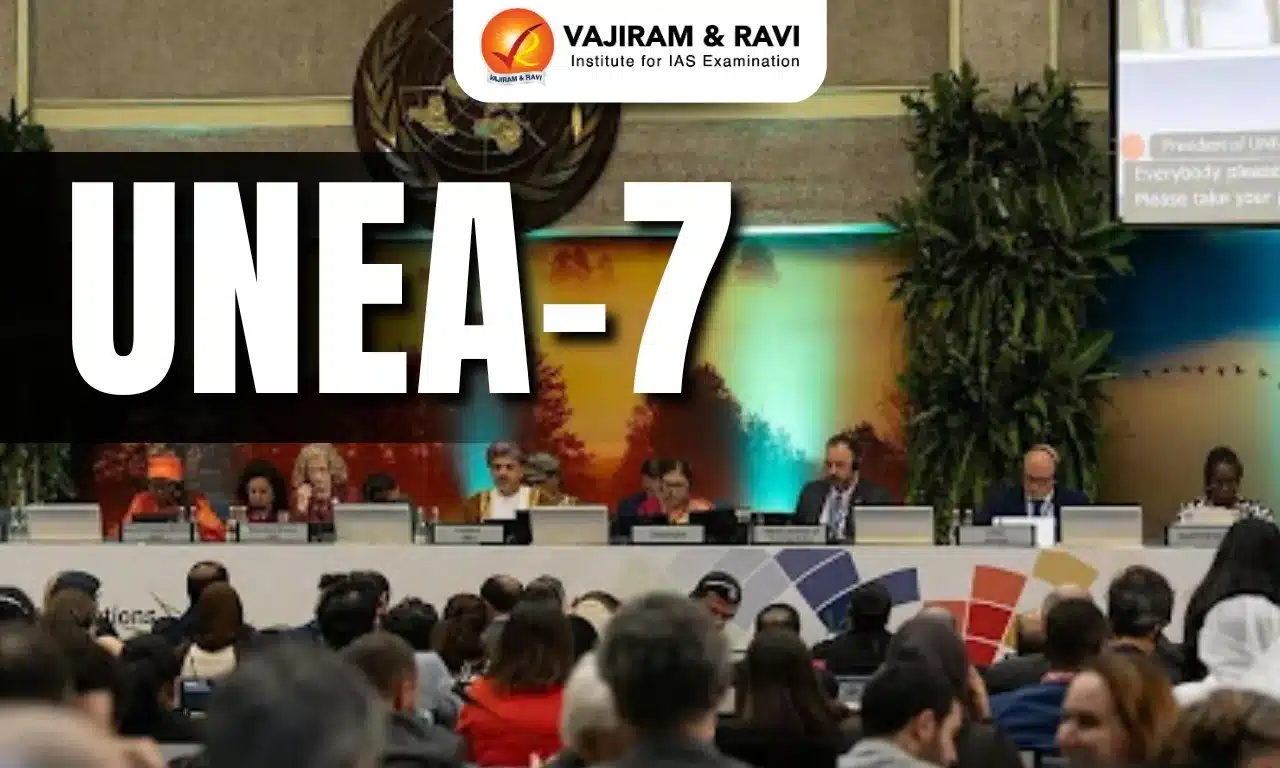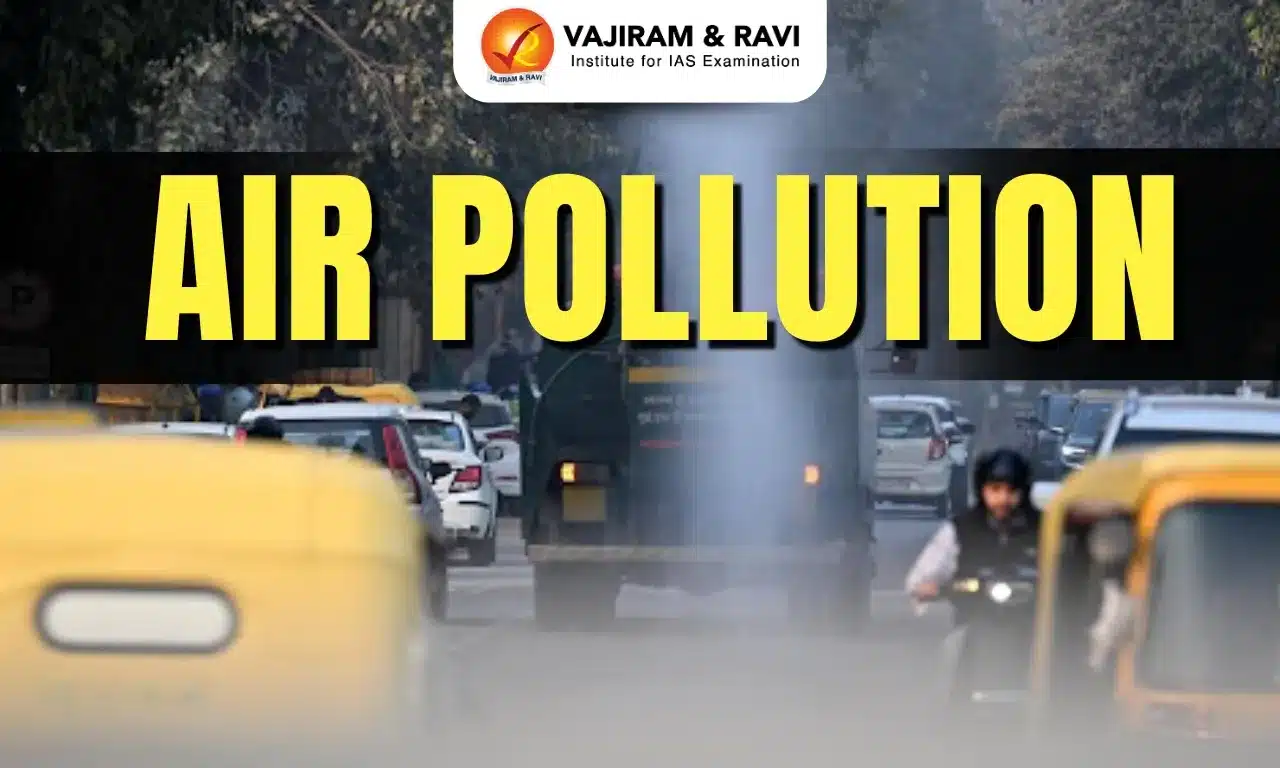What’s in today’s article?
- Why in News?
- What is COP?
- Agreement on Global Carbon Markets at COP29
- Challenges Ahead at the COP29
- India’s Role in Shaping COP29’s Legacy
- Conclusion
Why in News?
- At the COP29 climate conference in Baku, countries reached a landmark decision to advance a long-delayed agreement to establish a global carbon market under the Paris Agreement.
- While the agreement on carbon markets is seen as a breakthrough, the critical issue of climate finance remains unresolved, with developing nations emphasising the need for an updated, substantial funding goal.
What is COP?
- Defining COP:
- The Conference of Parties (COP) serves as the main governing body of the United Nations Framework Convention on Climate Change (UNFCCC).
- The UNFCCC is a 1992 treaty uniting 198 members (197 nations plus the European Union) against the threats of climate change.
- Each year, the COP gathers to review national emission data, monitor progress, and shape global climate policy.
- Key milestones of COP:
- Kyoto Protocol (1997): Established at COP3, it mandated emissions reductions for industrialised countries, setting a collective target of a 4.2% reduction by 2012 from 1990 levels.
- Copenhagen Accord (2009): COP15 introduced the 2°C warming limit and the concept of developed countries funding climate actions in vulnerable nations, though it fell short of delivering a new binding treaty.
- Paris Agreement (2015): At COP21, the landmark Paris Agreement set a goal to limit global warming to below 2°C, ideally at 1.5°C, and introduced Nationally Determined Contributions (NDCs) for each country.
- Glasgow Pact (2021): COP26 led to the “Glasgow Pact,” which included commitments to reduce coal usage and phase out inefficient fossil fuel subsidies, marking coal in a UN climate agreement for the first time.
- Loss and Damage Fund (2023): COP28 launched a fund to support countries affected by climate disasters, addressing long-standing calls for financial assistance to those bearing the brunt of climate change.
- Criticisms of COP:
- Failure to deliver climate finance:
- Developed countries, despite their 2009 pledge to provide $100 billion annually to developing nations, have yet to meet this promise.
- A 2021 UN report projected that developing nations would require $6 trillion per year through 2030 to fulfil their climate goals, highlighting a vast shortfall in funding.
- Insufficient emission reductions:
- While COP summits have led to emission pledges, these efforts remain inadequate.
- The International Energy Agency’s COP28 report indicated that, even with existing pledges, the world risks surpassing the critical 1.5°C warming threshold.
- Failure to deliver climate finance:
Agreement on Global Carbon Markets at COP29:
- Carbon market overview:
- The global carbon market, outlined under Article 6 of the Paris Agreement, allows countries to trade carbon credits – certified reductions in carbon emissions.
- This market aims to provide financial incentives for emission reductions, with prices set by emission caps established by participating nations.
- Article 6 of the Paris Agreement:
- It facilitates international collaboration to lower carbon emissions.
- It offers two pathways for countries and companies to trade carbon offsets, supporting the achievement of emission reduction targets set in their climate action plans, or nationally determined contributions (NDCs).
- The first option, known as Article 6.2, allows two countries to establish a bilateral carbon trading agreement under their own terms.
- The second, Article 6.4, seeks to develop a centralised, UN-managed system to enable both countries and companies to offset and trade carbon emissions.
- Progress at COP29:
- In a landmark decision at the first day of the global climate talks here, COP29 have officially adopted the new operational standards for a mechanism of the Paris Agreement under Article 6, setting the stage for a global carbon market.
- This adoption of Article 6.4, achieved during the Conference of the Parties serving as the meeting of the Parties to the Paris Agreement (CMA), sets the stage for operationalising Article 6, which has faced years of deadlock.
- Significance of this milestone:
- Carbon markets remain the last segment of the 2015 Paris Agreement awaiting full implementation.
- Though many more procedural steps are needed to bring this system into action, the agreement will help countries achieve climate targets more efficiently and affordably once fully operational.
Challenges Ahead at the COP29:
- Lack of consensus on climate finance:
- A primary agenda for COP29 is finalising the New Collective Quantified Goal (NCQG), a commitment by developed countries to provide funds for climate action in developing nations, replacing the unmet $100 billion target from 2020.
- However, no progress has been made on this front, with the G77-plus China group, representing over 130 developing countries, rejecting the initial draft of the finance agreement and demanding revisions.
- There are disagreements over the funding size, contributors, types, and coverage period.
- Demands of developing nations:
- Developing nations demand a minimum of $1 trillion annually from 2026, with G77 calling for $1.3 trillion.
- They insist that this finance should be new, predictable, and non-debt-inducing, specifically dedicated to climate action rather than investments in clean technology counted towards existing commitments.
- Developing countries also urged that any shortfall from the $100 billion annual goal in past years be covered as arrears in addition to the NCQG.
India’s Role in Shaping COP29’s Legacy:
- Call for an adequate and predictable finance mechanism:
- India highlighted NCQG as a top priority, advocating for significant financial commitments to the Global South.
- Indian negotiators emphasise that finance should be grant-based, low-interest, and long-term, with a balanced focus on adaptation, mitigation, and addressing loss and damage.
- Emphasis on adaptation for vulnerable communities: Given that climate finance often favours mitigation projects, India and its G77 allies call for stronger support in adaptation initiatives, particularly for communities at high risk from climate change impacts.
Conclusion:
- COP29 President Mukhtar Babayev highlights the potential for a finalised Article 6 framework to reduce the global cost of climate action by an estimated $250 billion per year through cross-border cooperation.
- India’s NDC commits to reducing emissions intensity by 45% from 2005 levels and establishing an additional carbon sink of 2.5-3 billion tonnes by 2030. Effective carbon markets could support India in reaching these goals.
Q.1. What is the G77 grouping?
The Group of 77 (G77) is the largest intergovernmental organisation of developing countries in the United Nations. It was established on June 15, 1964 by 77 developing countries that signed the “Joint Declaration of the Seventy-Seven Developing Countries”.
Q.2. How the Nationally Determined Contributions (NDCs) address climate change?
NDCs form the basis for countries to achieve the objectives of the Paris Agreement. They contain information on targets, and policies and measures for reducing national emissions and on adapting to climate change impacts.
News: Global carbon market gets green signal at COP29 under Paris Agreement’s Article 6 | IE | ToI
Last updated on December, 2025
→ Check out the latest UPSC Syllabus 2026 here.
→ Join Vajiram & Ravi’s Interview Guidance Programme for expert help to crack your final UPSC stage.
→ UPSC Mains Result 2025 is now out.
→ UPSC Notification 2026 is scheduled to be released on January 14, 2026.
→ UPSC Calendar 2026 is released on 15th May, 2025.
→ The UPSC Vacancy 2025 were released 1129, out of which 979 were for UPSC CSE and remaining 150 are for UPSC IFoS.
→ UPSC Prelims 2026 will be conducted on 24th May, 2026 & UPSC Mains 2026 will be conducted on 21st August 2026.
→ The UPSC Selection Process is of 3 stages-Prelims, Mains and Interview.
→ UPSC Result 2024 is released with latest UPSC Marksheet 2024. Check Now!
→ UPSC Prelims Result 2025 is out now for the CSE held on 25 May 2025.
→ UPSC Toppers List 2024 is released now. Shakti Dubey is UPSC AIR 1 2024 Topper.
→ UPSC Prelims Question Paper 2025 and Unofficial Prelims Answer Key 2025 are available now.
→ UPSC Mains Question Paper 2025 is out for Essay, GS 1, 2, 3 & GS 4.
→ UPSC Mains Indian Language Question Paper 2025 is now out.
→ UPSC Mains Optional Question Paper 2025 is now out.
→ Also check Best IAS Coaching in Delhi

















